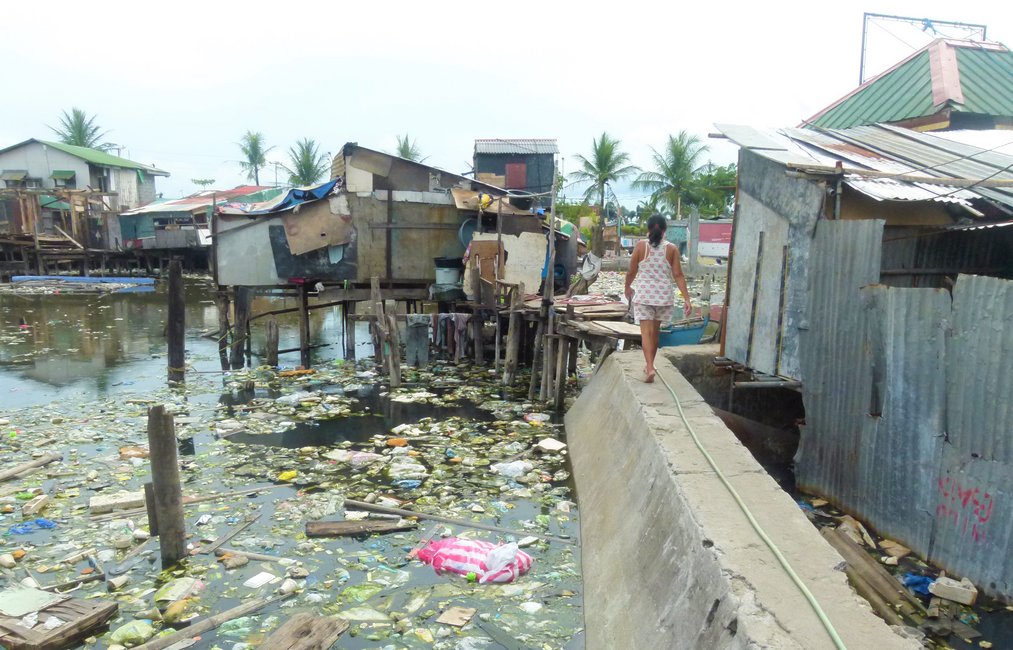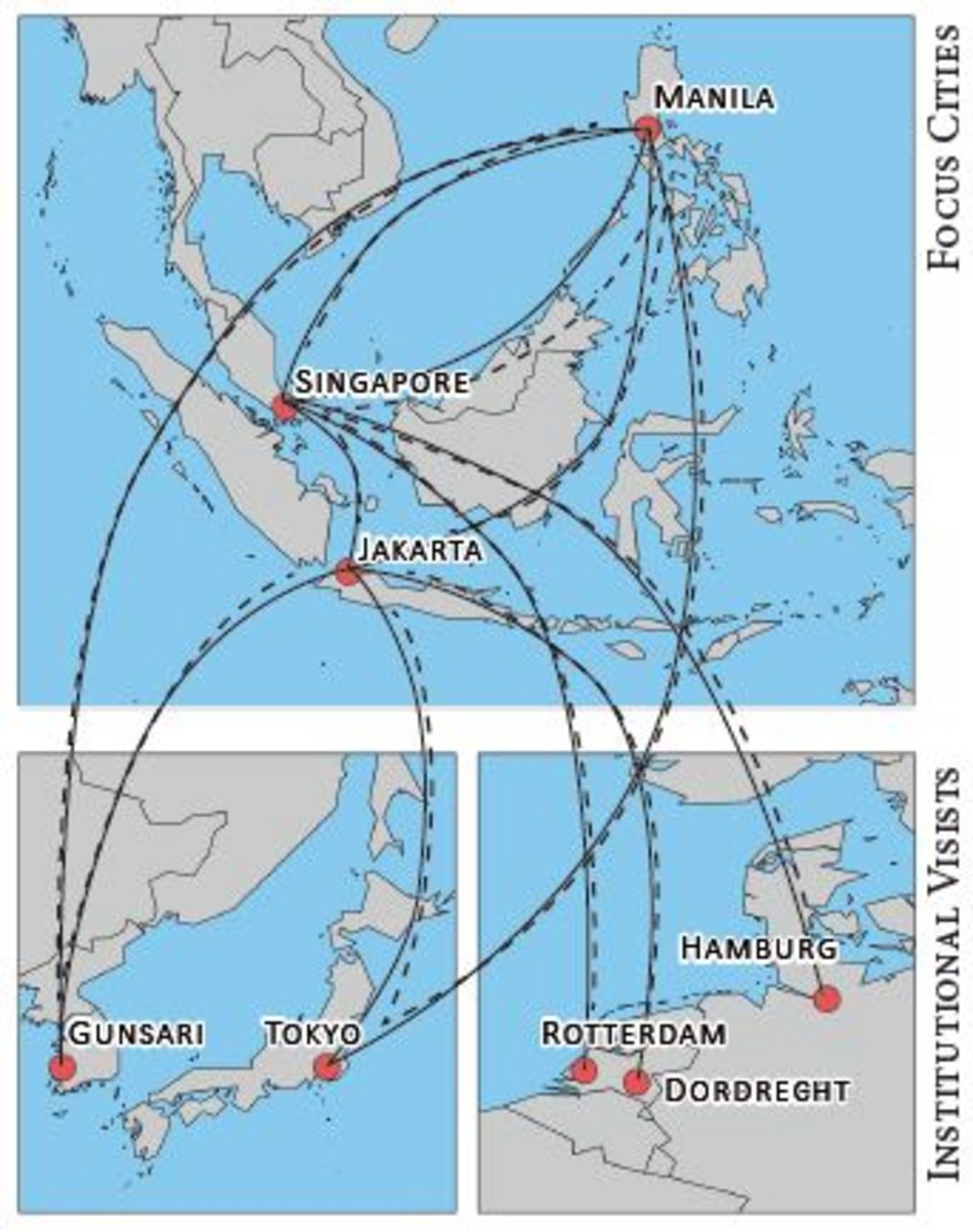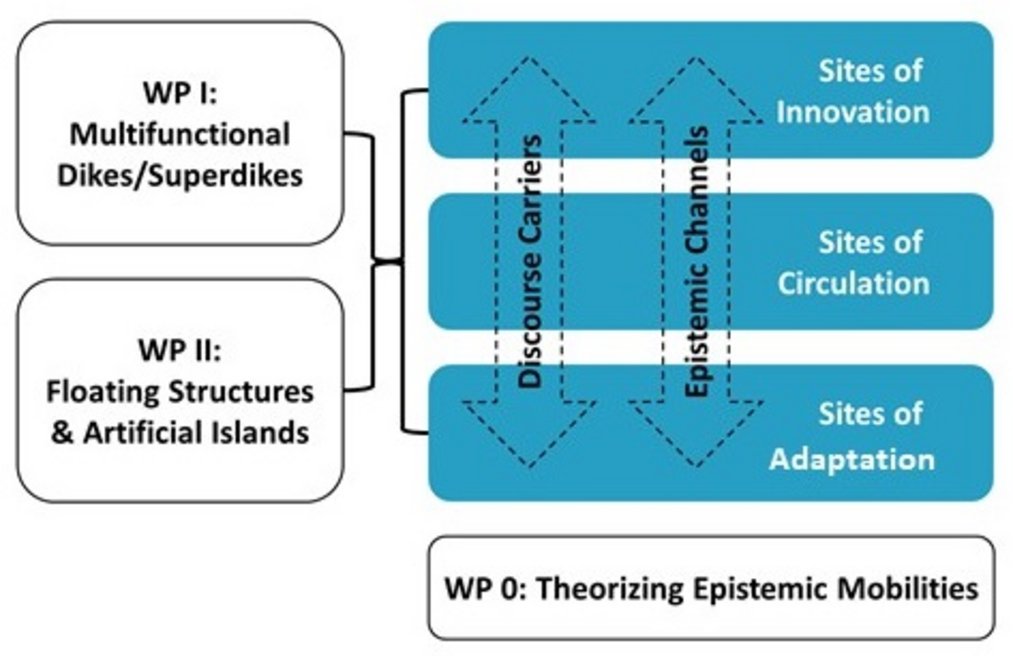BlueUrban
Towards Blue Urbanism for Sea Level Change Adaptation: Global Trajectories and Speculative Futuring in Island Southeast Asia (BlueUrban)
Second Phase Project, following EMERSA project (2017-2020)
Download the BlueUrban project flyer here.
Brief project overview
BlueUrban explores how global networks of innovation for living with sea level change influence diverse ways in which Southeast Asia’s coastal cities futuristically reimagine, negotiate, and materially shape their urban environments in the century to come.
The study aims to map patterns of global circulation, and to trace how urban imaginaries and practices of speculative futuring for living with socio-environmental uncertainty evolve in the “megacities” of Jakarta, Manila, and Singapore. In doing so, we focus on two emergent technologies of coastal adaptation: multifunctional dikes and large floating structures including artificial islands.
In Phase I of the EMERSA project, we studied knowledge mobilities, while asking which solutions for sea level change adaptation gained local traction and why. This second phase project focuses on urban infrastructural futures, in order to understand broader entanglements between risk-driven practices of coastal intervention and more profit-led processes of urban change, taking into account real estate development for example. Sea level change can therefore be recast as a lived reality that is both dystopic for some, and utopic for others.
In particular, BlueUrban asks how micro-practices of ‘mobility agents’ in the ‘traveling business’ of sea level change adaptation co-shape ways in which cities come to be speculatively futured, for whom and why. The study conceptualises adaptation as a discursive practice, and a highly charged economic and political sphere, that connects vastly different sites for coastal change through a global set-up of knowledge transfer and translation, yielding both winners and losers in its wake.
This second-phase SPP 1889 project brings together integrative concepts within nascent scholarship on policy mobilities, social learning, Affect theory, and assemblage approaches. The interdisciplinary study combines several core conceptual and thematic currents crosscutting urban geography, coastal anthropology, the sociology of knowledge, critical urban planning, and political ecology.
How:
Technological practices co-evolve in different ways, are taken up, and are materially translated against diverse historic and socio-cultural settings. In/formal practices of “futuring” (or future-making), play a crucial role in now actor constellations, spaces and processes interact. We adopt a three-pronged approach in studying:
1) Discursive Spaces: Sites of Innovation (labs, research groups), Sites of Circulation (summits, trade fairs), and Sites of Adaptation (local projects);
2) Discourse Carriers: actors and actor-constellations (brokers, translators and constrainers), i.e. relations between consultants and urban governments;
3) Epistemic Channels: pathways and structures of flows of information, i.e. workshops, study travels, newsletters by international donor organizations.
Where:
With a focus on three Southeast Asian megacities, namely Jakarta, Manila, and Singapore, the project entails close collaboration with local partners crosscutting Universitas Indonesia, Ateneo de Manila University, and the National University of Singapore.
In tracing global mobilities, further research is being undertaken in Toyko, Gunsan (South Korea), and the Netherlands.
Research Design
The project is designed for multi-sited ethnographic research and a mix methods approach that allows to follow technologies and innovations from sites in which ideas are seeded and designed, to test beds and spaces of implementation. It will closely track how the solutions themselves change.
The two technologies are mirrored in the two Work Packages I and II, with a crosscutting conceptual WP 0. Each of the work packages will focus on one of the two selected adaptation technologies and trace the global interconnectedness and the localized translations and implementations in Southeast Asia.
WP 0 will further develop the mid-range concept of ‘epistemic mobilities’ through the identification and theorization of different trajectories of knowledge ‘translations’ that take place through boundary-crossing (i.e. geographic, social, terrestrial/marine etc.) when futuring coastal cities.
WP 1: Multifunctional dikes/Superdikes (led by Dr. Johannes Herbeck, University of Bremen)
WP II: Floating Structures and Artificial Islands (led Dr. Siriwardane, Leibniz ZMT)
WP 0: Mid-range concept building on Epistemic Mobilities and Social Learning for Change Adaptation (co-led by Prof. Dr. Anna-Katharina Hornidge (German Development Institute/DIE) & Prof. Dr. Michael Flitner(artec, University of Bremen).
Methods
BlueUrban researchers bring a range of diverse methodologies and analytical frames into the project, including discourse and narrative analysis, in-depth ethnographic approaches, oral and life history work, Participatory Learning and Action (PLA) frames, as well as other geographically inspired modes of inquiry. Moreover, the project aims at advancing a ground-up approach that we term as 'follow-the-moving-target' methodologies in Phase I, which enabled the tracing of multiple mobilities and influences of material and non-material, tangible as well as intangible subjects that travel - from infrastructures and technologies to imaginaries and discourses of urban futuring.
For more, you may also visit the dedicated projects's website:
Recent publications of the BlueUrban project:



